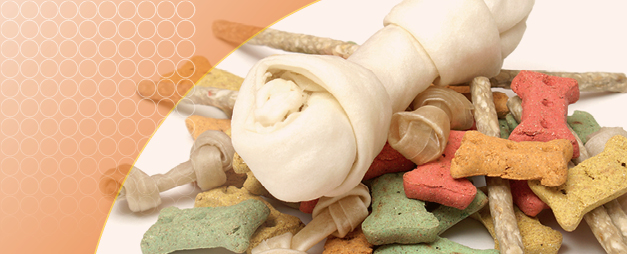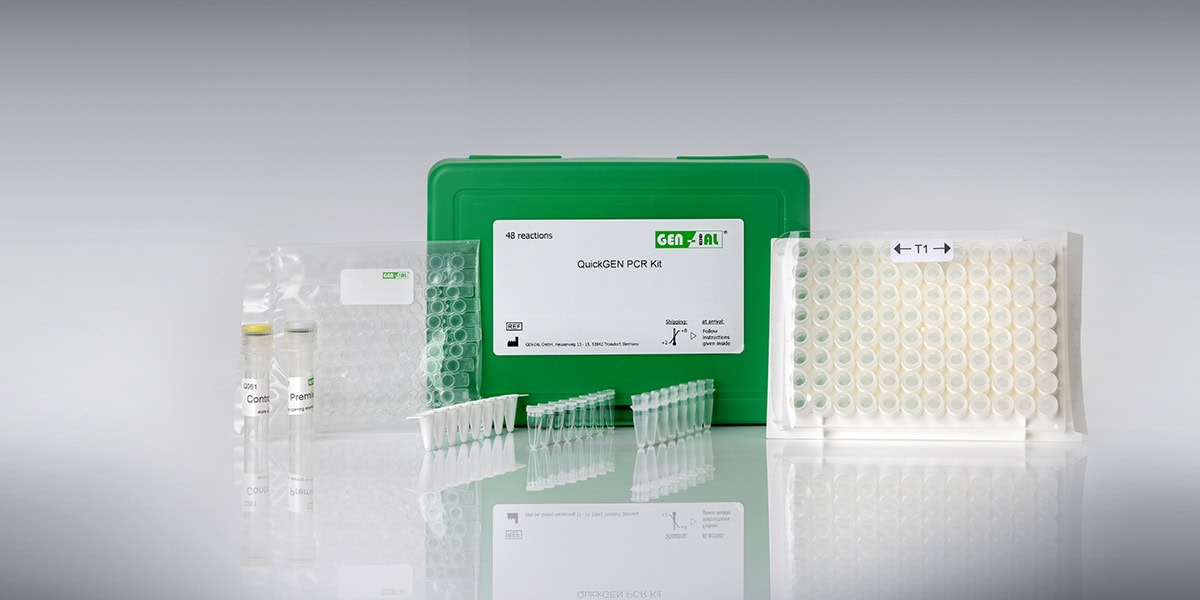
Recent news in Food & Feed Analysis
- Home
- /
- 6 potentially hazardous contaminants...
6 potentially hazardous contaminants in animal feed

Whether for cats, dogs, poultry, cattle or pigs: animal feed should be healthy and free from contaminants. Several product recalls have recently shown that this is not always the case. We show you six contaminants manufacturers should keep an eye on.
Just like with humans, health and performance of animals crucially depends on a balanced diet. In livestock farming, the quality of feed is a determinant factor of success, but quality demands increase also in the pet food sector. It is evident that feed should be adjusted to the particular animal species, contain a sufficient amount of nutrition, and be free from undesirable or prohibited substances. In order to ensure this, feed is subject to strict regulations. Regular analyses are therefore essential.
1. Microbiological contamination
Salmonella were responsible for several recalls in the last few weeks; products affected included dog chew and soy meal. High-protein feed is particularly vulnerable to contamination as it provides a very favorable environment for Salmonella. Contaminated feed can cause infections in animals. This is particularly problematic in the case of livestock as Salmonella may get into the animals’ milk, eggs or meat via smear infection. In addition to Salmonella, other bacteria as well as yeasts and molds can also cause contamination in animal feed. Monitoring of pathogenic microorganisms and the total bacteria count is therefore an important task in the manufacture of animal feed.
2. Residues
Meat that is used to produce animal feed is subject to strict controls, just as meat for human consumption. Nevertheless, it may occur that residues of hormones, antibiotics or veterinary drugs are present in the meat. ELISA tests can detect a large number of such substances in a timely manner. Furthermore, residues of plant protection products (pesticides) or fertilizers (nitrate) may get into animal feed. Maximum residue limits (MRLs) are established in the EU.
3. Mycotoxins
Mycotoxins are toxic metabolites produced by molds. They can cause growth and fertility disorders in animals even in low concentrations. Cereals are frequently infected by molds and may therefore be contaminated. In the German Feed Regulation, maximum levels are set for aflatoxin B1; the EU Commission has defined guideline values for deoxynivalenol (DON), zearalenone, ochratoxin and fumonisin. Mycotoxins can be detected quickly and easily on-site by means of lateral flow tests. Through extensive controls and preventive measures, mycotoxins rarely occur in animal feed nowadays.
4. Genetically modified organisms (GMO)
Soy meal, widely used in feed production, is often made from genetically modified soybeans. Corn, canola and rice often originate from genetically modified crops, too. Various GMOs are approved in the EU, but they must be declared starting from a threshold of 0.9 %. Manufacturers producing GMO-free feed must test their products accordingly. The method of choice for this is real-time PCR.
5. Heavy metals
Heavy metals can be harmful for humans and animals and may cause chronic poisoning. They get into feed via soils, fertilizers or additives. Particularly lead has repeatedly been detected in animal feed – most recently at the end of January in dog food from Sweden. For lead, cadmium, mercury, arsenic and fluorine, maximum levels are established in the EU.
6. Dioxins
Dioxins are organic pollutants that accumulate in the environment and occur ubiquitously in soils, waters, plants and animals. For dioxin and the equally toxic polychlorinated biphenyls (PCBs), maximum levels are established in the EU.
Legal regulations for animal feed:
- German Feed Regulation
- Regulation (EC) No. 767/2009
- Directive 2002/32/EC
- Regulation (EC) No. 152/2009
- Recommendation 2006/576/EC


